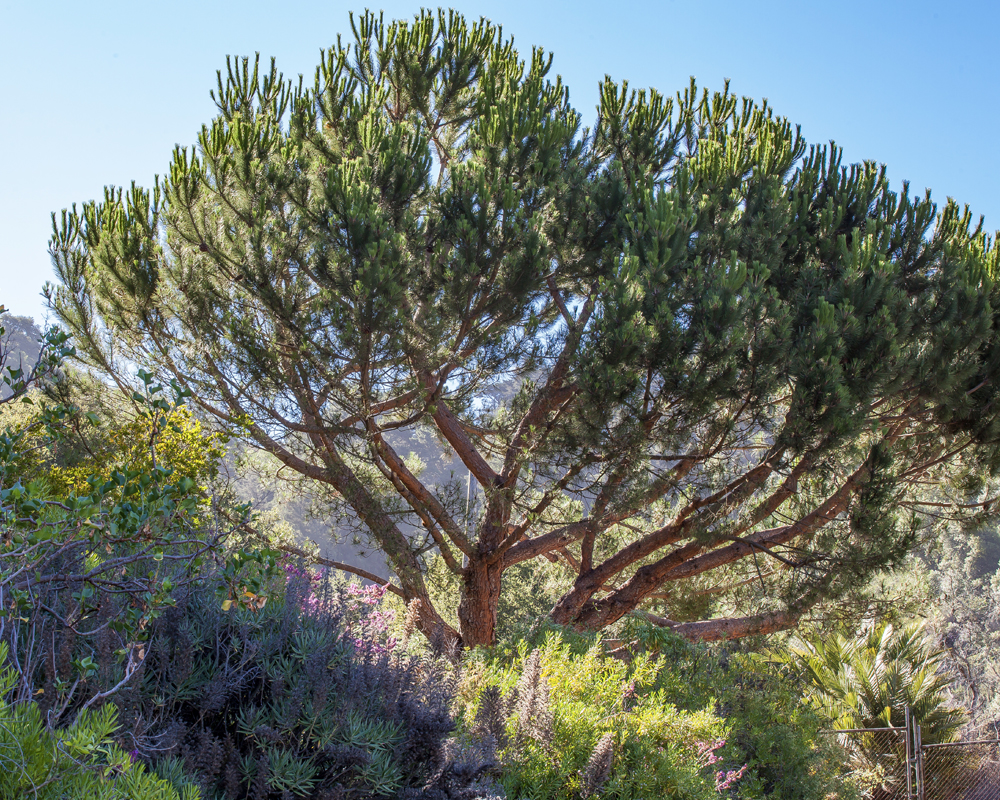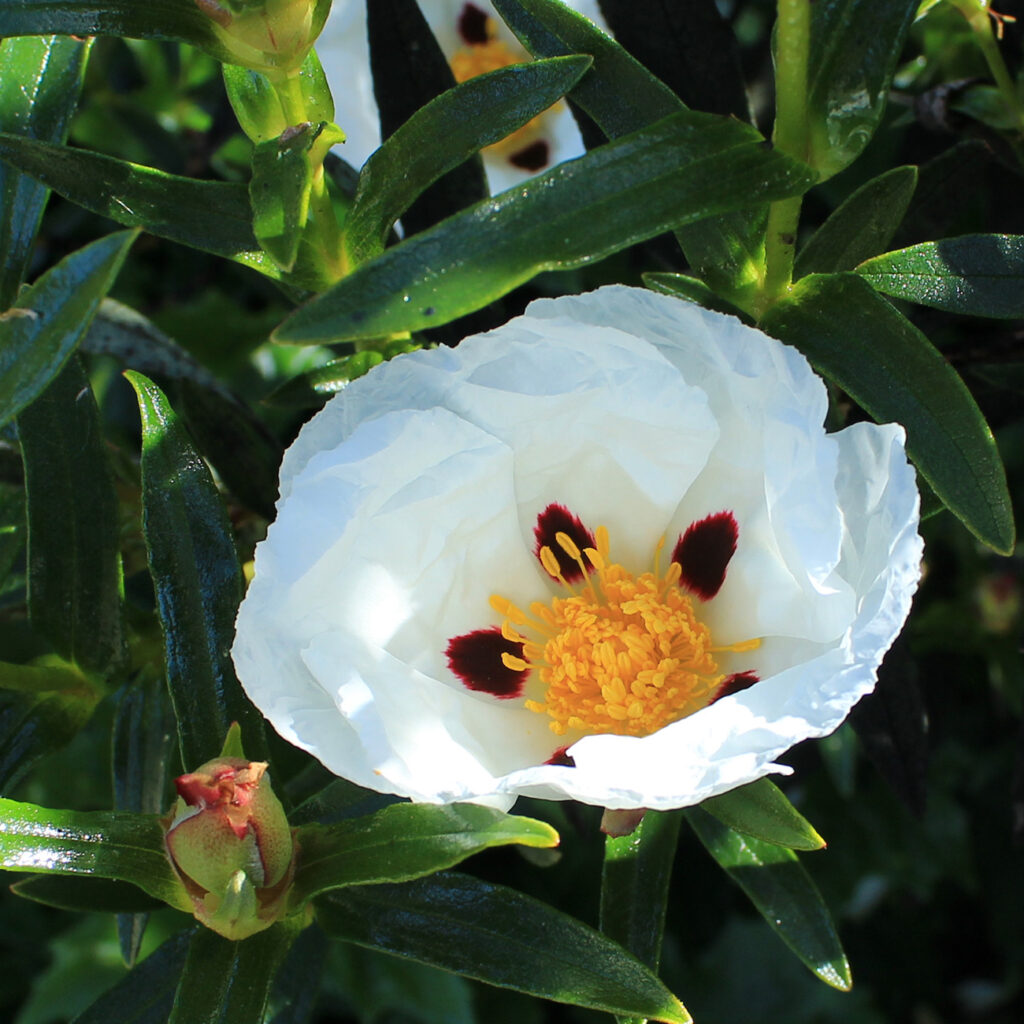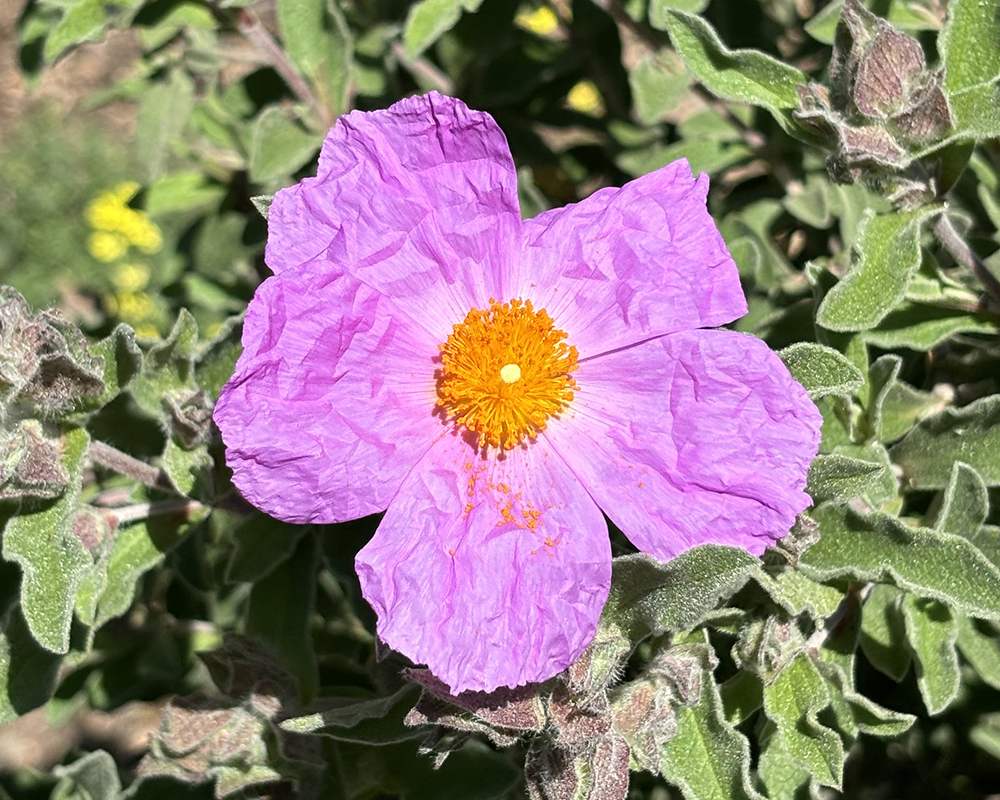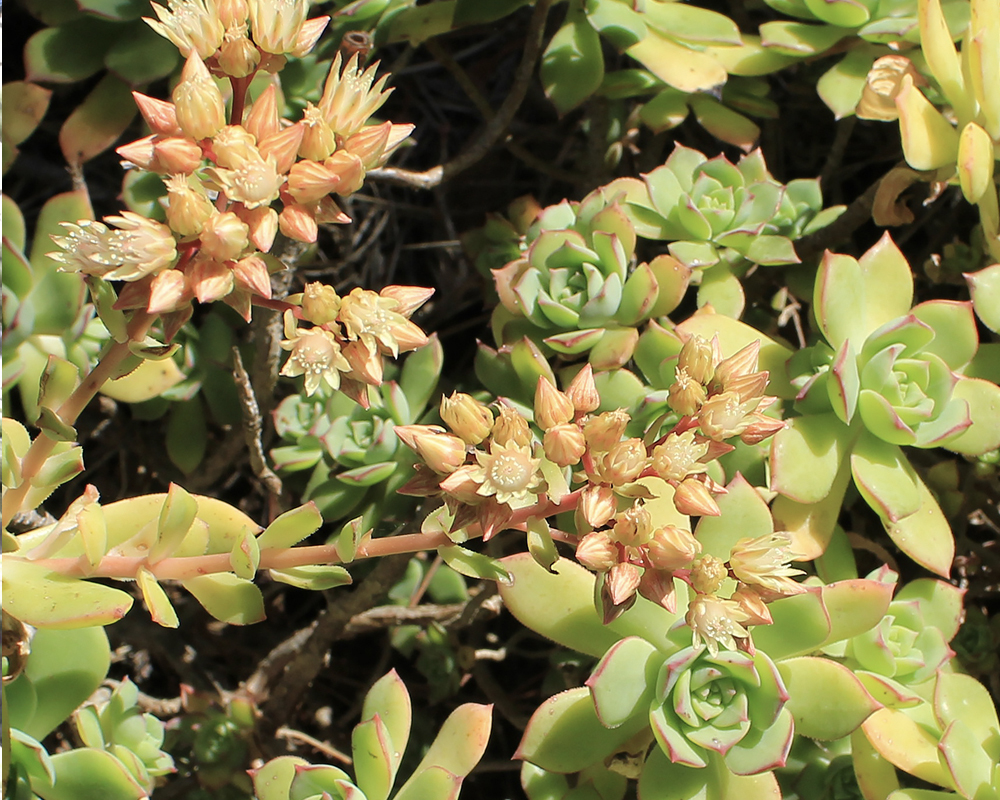
Mediterranean
Located on the steep, eastern edge of the Garden, our Mediterranean Area evokes the feeling of climbing the rocky slopes of the countries surrounding the Mediterranean Sea. There the climate is characterized by cool, wet winters and warm, dry summers, very similar to the San Francisco Bay Area’s weather.
In this region, the meeting of three continents—Europe, Africa, and Asia—results in a particularly diverse flora. Visitors can enjoy the flush of early to mid-season flowers, summer season scents, and birds foraging for ripe seed heads.
Regions
At the Garden, five different plant communities of the Mediterranean are represented. These include the maquis—a plant community of shrubs and low trees with small, leathery leaves, similar to the chaparral of California and the matorral of South America.
The garrigue is characterized by low-growing shrubs, annuals, and bulbs. From late winter to early summer, look for a mass of bloom and new growth. Some plants to look for are thyme (Thymus), oregano (Origanum), Salvia, Phlomis, and geophytes such as Iris and Crocus.
The mixed deciduous woodland area provides a cool, shaded retreat on hot summer days as well as fine views across San Francisco Bay. Look for deciduous Mediterranean trees like maples (Acer), hazelnut (Corylus) and an alder (Alnus) from Cyprus. Layered among these deciduous elements are evergreen shrubs like Phillyrea or Erica, and the drought-tolerant shrub, butcher’s broom (Ruscus aculeatus). A peony (Paeonia broteri) from Spain provides magenta flowers in spring and hellebore (Helleborus argutilfolius) a mass of pale green flowers through winter and spring.
Finally, the Macaronesian plantings consists of plants mainly from the Canary Islands and Madeira. This flora has links to the Mediterranean flora; 20 million-year-old fossils found in the Mediterranean region are from laurel forest species now only found in the Azores, Madeira, and the Canary Islands. The more arid-adapted plants of Macaronesia also have close relatives on the African continent. This arid area also includes plants like the giant dandelion Sonchus, which can grow up to two meters (six ft); many species of the succulent Aeonium; and a lone Dracaena draco—the dragon tree with orange sap. The shadier section contains elements of laurel forests, such as holly (Ilex canariensis), Viburnum, and the Canary Island bellflower (Canarina canariensis).
Banner image: Aeonium haworthii



